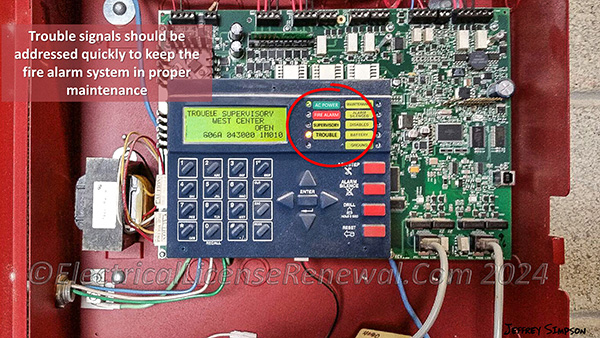Understanding Control Panels.

The fire alarm control panel (FACP) is the central hub of a fire alarm system, responsible for monitoring inputs from various sensors and initiating appropriate responses. It houses the electronics that control the system and interfaces with other building systems. The FACP receives signals from initiating devices such as smoke detectors, heat detectors, and manual pull stations. When an initiating device detects a potential fire, it sends a signal to the FACP, which then processes the information and triggers the alarm system if necessary.
The FACP also manages notification appliances such as horns, strobes, and speakers, which alert building occupants to evacuate in the event of a fire. In addition, the control panel may be connected to a remote monitoring station, which can notify emergency services when an alarm is activated.
One of the key functions of the FACP is to supervise the system's integrity. It continuously checks the status of all connected devices and circuits, ensuring they are operational and free from faults. If a problem is detected, such as a broken wire or a malfunctioning detector, the FACP generates a trouble signal (both an auditory and visual indication of the problem) to alert maintenance personnel to the issue.
Quite often a FACP issuing a trouble signal is ignored by building personnel. A FACP that is always beeping due to constant trouble signals may eventually be tuned out by maintenance personnel. Addressing trouble signals with regular system maintenance is critical to ensure proper functionality of the systems and reduce false alarms.
Another common issue is when the circuit breaker supplying power to the FACP is inadvertently shut off each night by employees. NFPA 72 Section 10.6.5.4 requires a circuit breaker lock for installations where a circuit breaker serves as the FACP disconnecting means. Locking the circuit breaker in the “ON” position still allows the circuit breaker to trip internally during a fault on the circuit while also preventing the circuit breaker from being shut off for instances where employees use the circuit breakers as switches when shutting off warehouse lighting for the night when the shift is over. Even though the FACP is required to have a secondary power supply (such as a battery) with a capacity of 24 hours, continually shutting off the power each night will shorten battery life and produce a trouble signal.
Control panels can vary in complexity, from simple units for small buildings to advanced systems for large facilities. Some panels offer programmable features, allowing customization of alarm responses based on the specific needs of the building. For example, in a high-rise building, the FACP might be programmed to control elevator operations, shutting down HVAC systems to prevent the spread of smoke, and activating smoke control systems.
Regular testing and maintenance of the FACP are essential to ensure it functions correctly. This includes checking the battery backup system, verifying communication links with remote monitoring stations, and testing all connected devices. Understanding the role and functions of the FACP is crucial for installers and maintenance personnel to ensure the reliable operation of fire alarm systems.